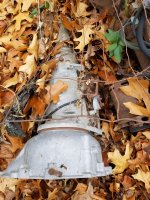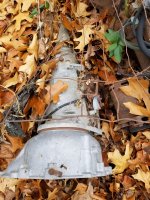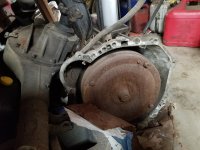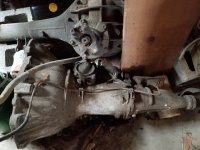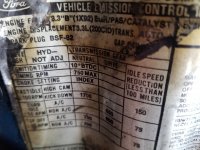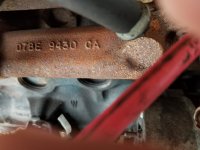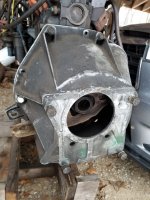It's a fact that you can learn a lot from that short block's and its head's Casting Numbers if fact with them and togeather with their Casting Date Code Numbers I can tell you the exact day that Ford cast those parts at their engine foundry. Sometimes it's not that important except when you need to find or order a replacement part.
To me it's never been that hard to change an Auto Trans car or truck to a manual Trans or vice versa I have done them on many over the years. The good thing about these Fords is that the brake pedal support assembly under the dash is basically the same for an Auto or Manual Trans brake pedal assembly so you only need to change out the the pedals. So you just need to acquire a clutch and brake pedal set if that's not available in your local junk yards, here is a new set that's not to bad a price.
https://www.cjponyparts.com/cj-classics-brake-and-clutch-pedal-assembly-manual-transmission-1965-1966/p/3624C/?msclkid=8725070987fd1afa120366dd30271025&utm_source=bing&utm_medium=cpc&utm_campaign=New Bing Shopping Ads&utm_term=1101201851898&utm_content=All Products
Check out the support assembles bushings and bearing surfaces for wear, if I was rebuilding one of these support assemblies today that was very worn I would go with the Roller Bearing converstion Kits to repair it as well as making the pedals a little easier to push.
Here is the link for info on the Mustang Steve Cable Clutch Pedal parts and kits.
https://mustangsteve.com/product-category/clutch-kits/
If you wanted to stay with an Automatic Trans then yes if that 302 C4 Trans is the Case Fill type Trans (some pictures is all I need to give a posative ID) than it could also be used since the V8 C4's have more clutches inside it will be very strong Trans to use for a six. To do this swap and be a direct bolt in you will need only to find a few parts, these are a 1965 to 1981 Ford 170 / 200 Six C4 Tin Block spacer Plate. a 1965 to 1981 Ford 170 / 200 Six Flex Plate, a 170 / 200 Six Troque Convertor with the correct input Shaft Spline count (this is determined by the year of the Trans. Now if your orginal 1964 1/2 to 1965 170 engine still has its Auto Trans this should also be a C4 will have most all of the parts you will need to do this swap i.e. The Tin Block Plate, the Flex Plate, and the correct C4 bell housing, the torque convertor may also work if the 302 C4 was a 1968 or 1969 Trans otherwise you need the TC. There is three different possibilities that have two different input shaft diameters and there are three different spline counts.
1. First one is a 1964 to 1969 C4 has a .788 inch diameter input shaft and a TC with a 24 Spline count.
2. Next is the one year only 1970 C4's with a .839 inch Dia. input shaft and a TC with a 26 spline count.
3. The last and by far the most common is the 1971 to 1981 C4's again with a .839 inch Dia. input shaft but now with a TC with a 24 Spline count.
Last you would also need to find a 1965 to 1981 Ford 170 / 200 Six C4 Bell Housing these are the small bolt patteren bell housings that can bolt right on the front of the Case Fill C4's so you just unbolt your current C4 V8 bell housing and install and torque the bolts on the correct Six Cylinder bell housing, that's all. I do like to use a TransGo Shift Kit in my C4's and a small Aux. Trans Cooler. Best of luck
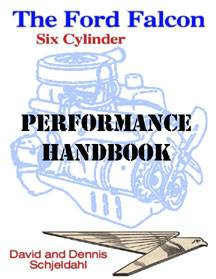
 www.vintageinlines.com
www.vintageinlines.com


